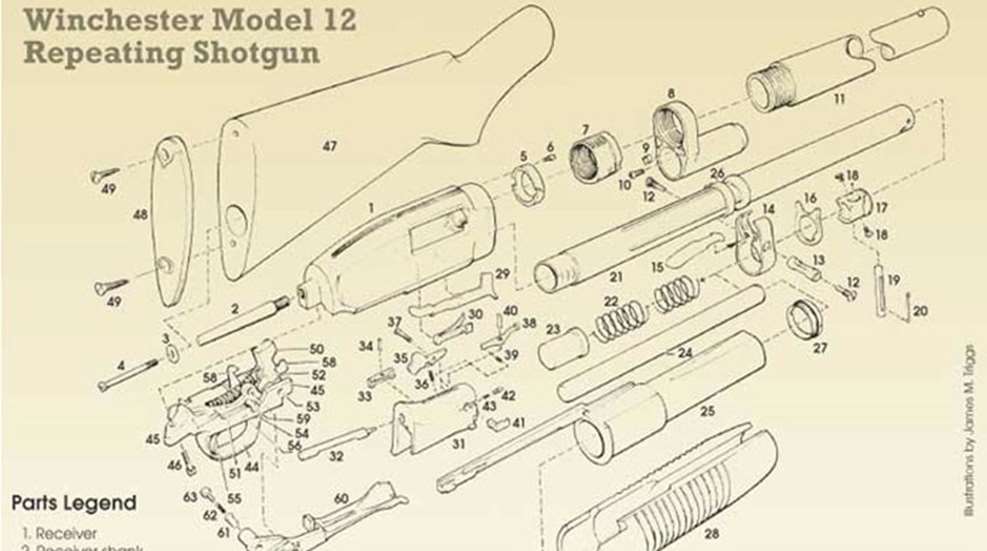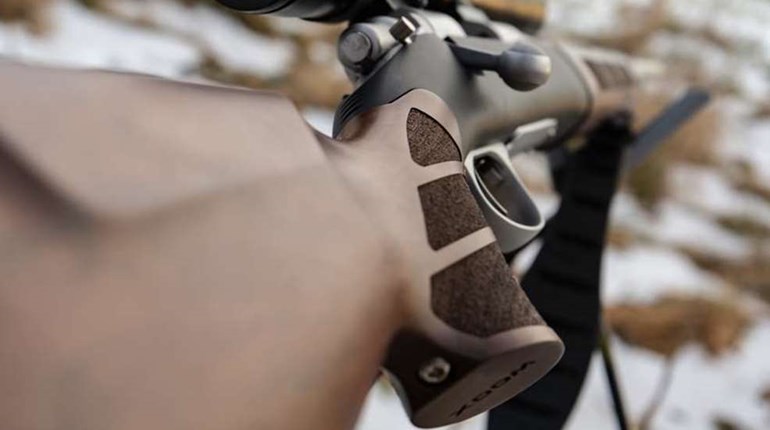
You already know that stock fit can and does affect a shooter's performance. For most rifle and shotgun shooters, fit of the stock to the face and shoulder, eye alignment with the sights, and position of the shooting hand in relation to the trigger determine how comfortable a particular gun feels. These factors effectively determine how well a shooter can handle a rifle or shotgun. These comfort features can be expressed in a number of important stock measurements.
Cast
This is the lateral displacement of the centerline of the buttplate (pad) from the centerline of the bore. For a right-handed shooter, this displacement is usually to the right and is called cast-off. For left-handed shooters, with stock displacement tot he left, it is called cast-on. A stock with an abnormally large amount of cast-off or cast-on is designed for shooters who mount the gun on the right or the left, but who have an opposite-side dominant eye (called "cross-dominance").
Drop
This is the vertical distance from the line of sight to the comb, Monte Carlo cheekpiece or heel of the stock. On rifles, drop is measured downward from a straight line extended from the top of the front sight through the top surface of the open rear sight adjacent to the notch. The drop on target rifles is usually measured from the centerline of the bore. On rifles having no sights, drop is measured from the top of the receiver. Drop measurements in shotguns are taken from an extension of a straight line drawn from the base of the front bead sight across the highest point on the frame or receiver. To give an indication of the angle or slant of the comb from horizontal, two drop measurements are often given: drop at comb and drop at heel. If these two measurements are the same, the stock has a straight comb. More often, on hunting rifles, the drop at heel will be larger than the drop at the comb, giving a comb that slants downward toward the butt.
Girth
This is the smallest circumferential dimension at the pistol grip.
Length of Pull (LOP)
This is the distance from the center of the trigger to the center of the buttplate or recoil pad. Taller or longer-armed shooters generally require a longer LOP, while the reverse is true for the shorter-statured. Most standard factory rifles and shotguns have LOPs of from 13 1/2 inches to 14 1/2 inches. Many manufacturers offer rifles with stocks having pull lengths of about 12 1/2 inches for youth or ladies.
Pitch
A term normally reserved for shotgun stocks, this is the angle at which the buttplate or recoil pad slopes in relation to the bore axis. It is found by extending a line across the butt and drawing at right angles to this line an additional line through the highest point in the receiver or frame and measuring the distance from an extension of this line to a point at the base of the front sight bead. The pitch is said to be "down" if the described line is above the front sight bead, and "up" if below. The pitch is normally down.






































